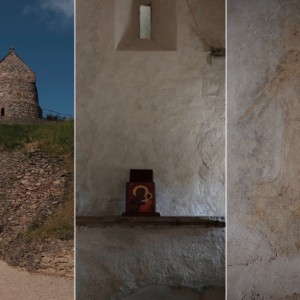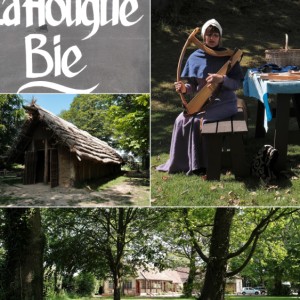La Hougue Bie…
………………………….Jersey
A Back Blip, uploaded Tuesday 31st December for 3rd June
La Hougue Bie is one of the largest and best preserved passage graves in Europe. This Neolithic ritual site, which was in use from around 4,000 BC, is one of the ten oldest buildings in the world and is older than the pyramids. (from information leaflet)
The main photo shows the entrance / exit to the Passage Grave - it’s very low and at one point taller people almost have to crawl to gain entry to the inner chamber.
The narrow passage is 9.6m in length, ending in an oval-shaped chamber (9m in length and 3.6m wide) There are also two small chambers on either side of the main chamber.
The Passage Grave. Although sites like this are generally known as tombs, they had many users, often ritual and ceremonial, as well as including burials.
Extra photos
The Mound is the stone structure covered by grass. This stone structure was exposed during excavations between 1991 and 1995. Entrance to the Passage Grave can be seen with the Chapel of Notre Dame de la Clarté on top of the Mound.
La Hougue Bie was a pagan site until Christianised by the building of a Chapel in teh 12th Century
It was unbelievable to think I was standing inside this incredibly old ‘building’ and one I will never forget.
Second Extra A replica of a Neolithic Longhouse, made using tools and traditional techniques. Instruments and musician, park-like surrounds
Third extra is a monument to the Forced Workers. During the German occupation from 1940 to 1945, thousands of men and women were brought to the Channel Islands as forced workers. This poignant memorial is in a Battalion Command Bunker, built with their labour so quite fitting it is now a memorial to them.
Fourth extra photos are from our visit to Mont Orgueil Castle. The 13th century castle is built on a rocky outcrop overlooking the Royal bay of Grouville.
I love the creative presentation of the 3D Medieval Tree of Succession.
Three oak figures carved by Bill Ming depict the despair and suffering of prisoners.
The medieval alter stone is in ‘The Long Cellar’, the Chapel of St George.




Comments
Sign in or get an account to comment.


